Do Personal Health Trackers Belong in the Doctor’s Office? Patients Say Yes.
We last reported on the role of consumer fitness wearables such as Fitbit and Apple Watches in healthcare back in 2021. Since then, the number of users for these devices has grown.
Apple, for example, announced in 2022 their highest percentage of iPhone users who also had an active Apple Watch. [1] Similarly, Fitbit added 9 million registered users in 2022 [2], and innovative newcomers like the Oura Ring are growing in popularity, as well. [3]
Our 2021 research showed that people who use these personal health trackers had an interest in sharing the data they collect with their healthcare providers in order to gain better health recommendations and treatments. Today, with the growing popularity of consumer wearables, that interest has also increased.
In our 2023 Consumer Wearables Survey*, we found that interest has grown from 56% who were “very interested” in 2021, to 91% who are “somewhat” or “extremely” interested in 2023.
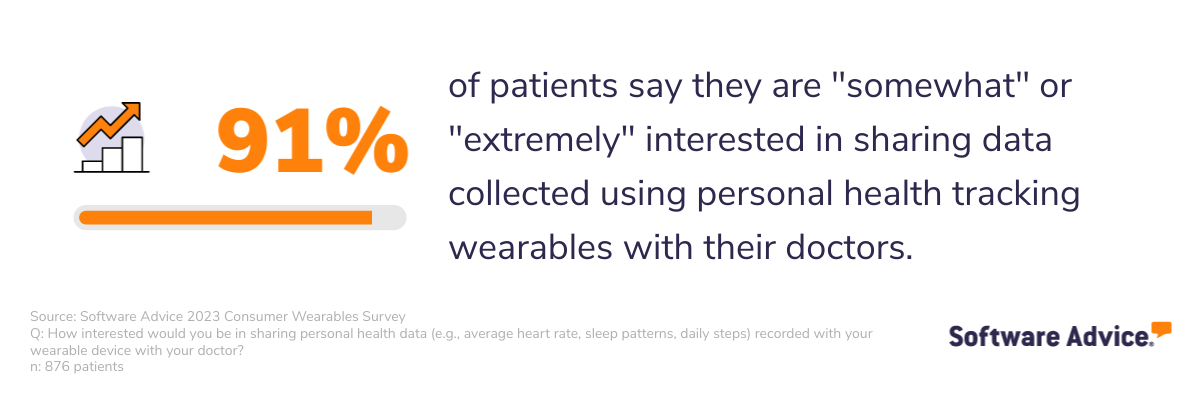
It has long been understood that more engaged patients generally enjoy better health outcomes when seeking treatment for different illnesses. Given the data uncovered in our recent survey, it’s apparent that these personal healthcare tracking devices are an excellent way for doctors to engage patients on an ongoing basis.
In this report, we’ll cover exactly how providers can incorporate this data into their treatment plans, as well as why it matters to patients and what the future might look like for personal wearable devices.
Key findings
91% of patients are interested in sharing data from their personal health tracking devices with doctors, compared to 56% in 2021.
Patients want to share this data with their doctors in order to take more active roles in their own healthcare (82%) and improve their own health outcomes (77%).
87% of patients are more likely to choose a doctor who takes data from personal wearables into consideration over one who does not.
Patients are most comfortable sharing data with doctors in person during exams (76%) or providing data in intake paperwork before exams (73%).
Patients want to take charge of their own health
We asked patients in our survey who expressed an interest in sharing the data collected using personal health trackers why they want to do so, and the number one response was to take a more active role in their own healthcare.
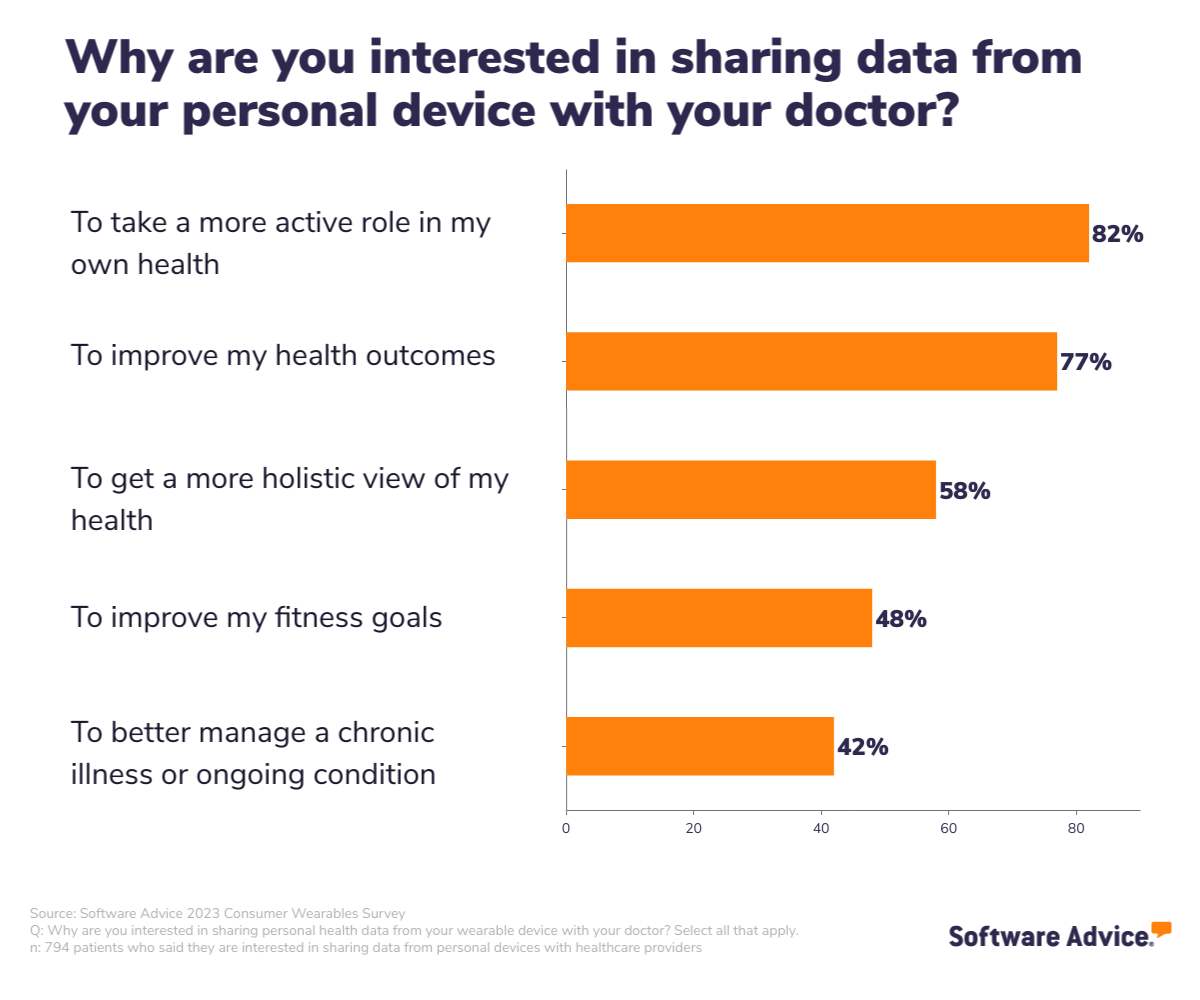
This bodes extremely well for practitioners who want to provide the highest quality of care to their patients, as it has been well established that more engaged patients enjoy better health outcomes. [4] An engaged patient is more likely to follow medical instructions, comply with health advice from professionals, and strictly adhere to treatment protocols.
As an added bonus, not only will the results of their treatment improve, but so will their overall satisfaction with the healthcare experience—something that makes them more likely to leave positive reviews and return to your practice if they need further care in the future.
Patients are consumers now, and that means medical offices need to be thinking about how to attract their patients’ business. One great way is to ensure they’re receiving excellent care and experiencing positive outcomes from treatments.
Another way is to listen to patients and give them what they want. We know that 91% of patients are interested in sharing personal health data with their providers, which means incorporating this into your patient history collection could make a lot of patients happy.
In our survey, we also asked patients how likely they would be to select a healthcare provider who incorporates their wearable health device data into treatment plans over one who does not. One in five said they are extremely likely to make this selection.
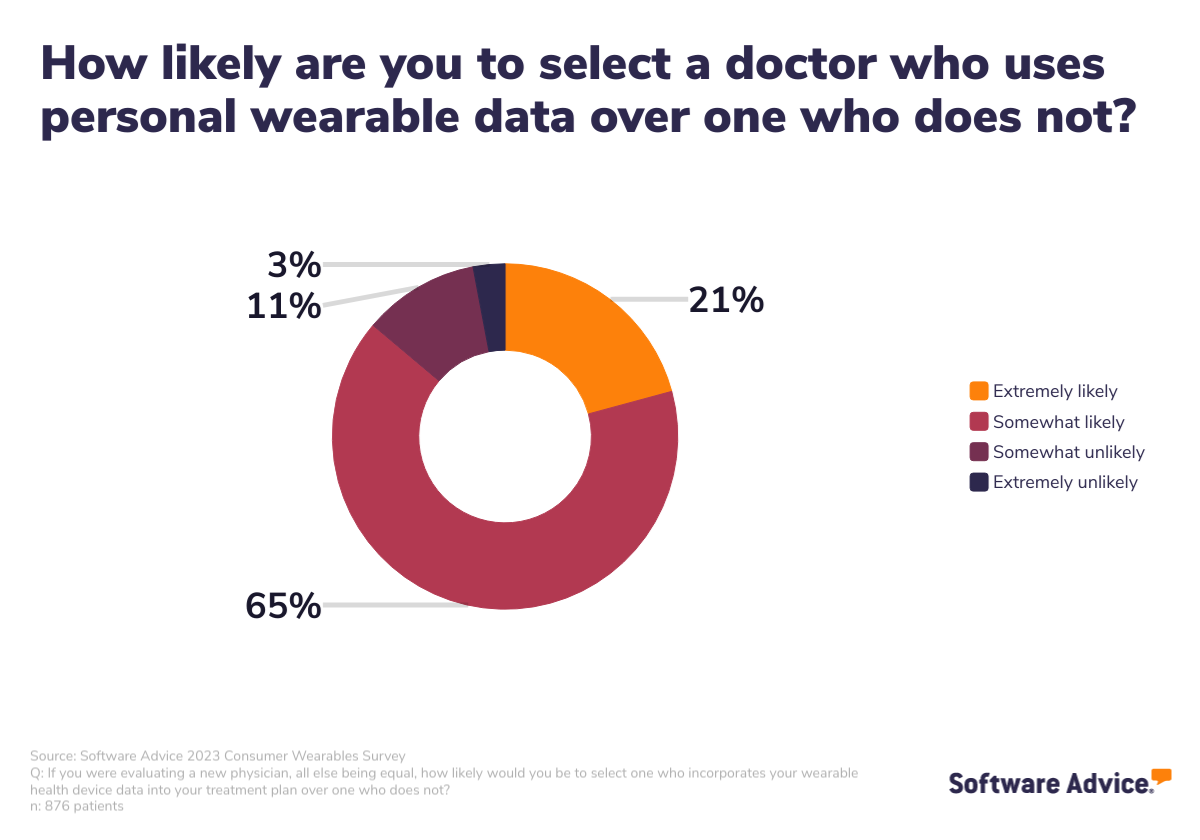
Another 66% say they’re “somewhat likely”, meaning that by making small changes to incorporate this data into your routine, you have an opportunity to attract 87% more new patients to your practice.
Here’s how doctors can start incorporating this data into treatments
The question now becomes, how do you incorporate this data into your treatment of patients? The answer is you have some options.
1. Review health data with your patient during exams
For patients, the favorite method of sharing this data is to open their app and go over the information with you in the room.
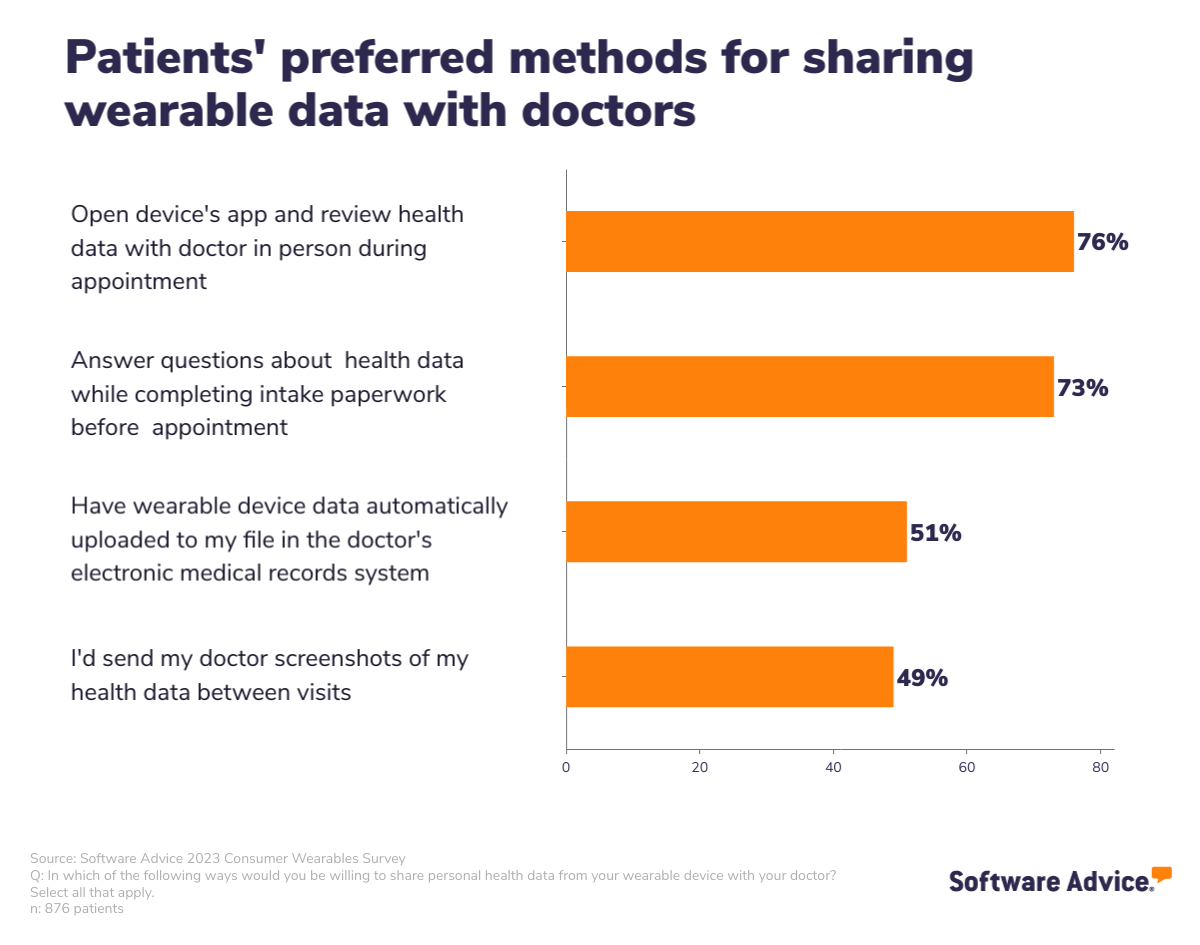
This process might be more time consuming than other options, but it’s a good way to help patients feel comfortable sharing this data with you. You can open the device or app with them in the room and explain what exactly their device is tracking (e.g., Apple Watch tracks things that most people won’t know about like respiratory rate, blood oxygen, and heart rate variability).
Once you’ve established what the important data points are for your patient and explained how you intend to use the data, you may be able to ease them into the faster method of data collection using intake paperwork.
2. Collect patient data alongside other medical information during the intake process
Fortunately, 73% of patients say they would be happy to fill out additional intake paperwork to provide this data along with the rest of their medical history and reason for visiting. This is perhaps the simplest method of collecting this data for practices to incorporate into their regular existing routines.
And don’t worry about overwhelming patients with the intake process; 89% of patients in our survey say they complete all intake forms in less than 15 minutes, and 82% say doctors are not asking them too many questions during this process.
With this in mind, you have time to ask additional questions that can help you provide a more tailored medical experience to patients, so use it wisely.
3. Use patient data to inform medical recommendation
What you do with that information once you have it also depends on the individual patient. You could settle for using it as background data to help you make more specified treatment recommendations depending on the patient, their condition, and their personal habits.
You could also take it a step further and “prescribe” actions that your patients can track using their devices—something 78% of patients are interested in, regardless of their age or gender.
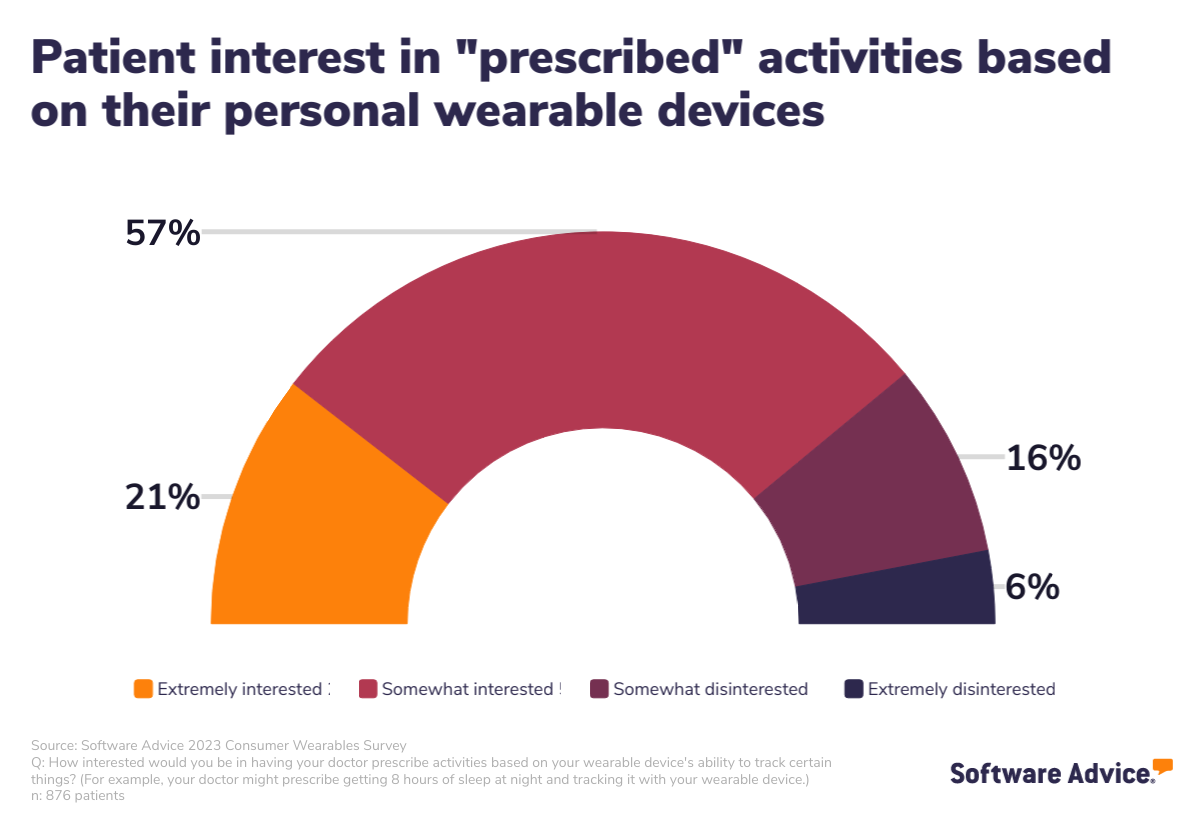
For example, an active lifestyle is known to make the body more sensitive to insulin, which can help patients with diabetes better manage their blood sugar. [5] If a doctor is treating a patient with diabetes who has a personal fitness tracking device, they could “prescribe” (or simply suggest) thirty minutes of light exercise per day for the patient to track using their device.
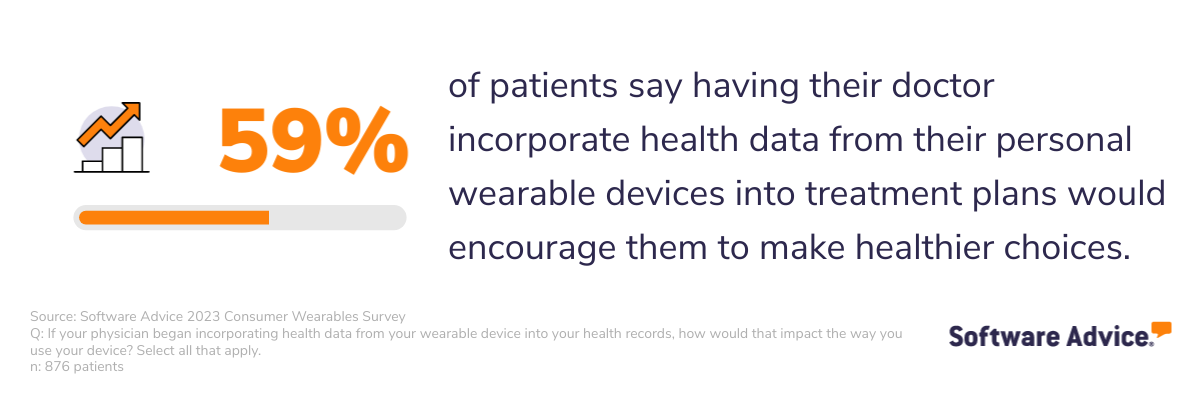
We know that an engaged patient is a more successful patient, but the benefits of healthcare providers using this data don’t end there. Over half of patients in our survey say that having their doctor incorporate health data from their personal wearable devices into treatment plans would encourage them to make healthier choices like exercising more often.
A word of caution: Security matters
While the benefits of utilizing personal wearable data are outstanding, we should take a moment to discuss one big drawback: Security risks.
While only 82 patients in our entire survey said they were not interested in sharing data from their personal wearable fitness trackers with doctors, their reasons for feeling this way are important: 41% say they have concerns about losing their data in a potential security breach.
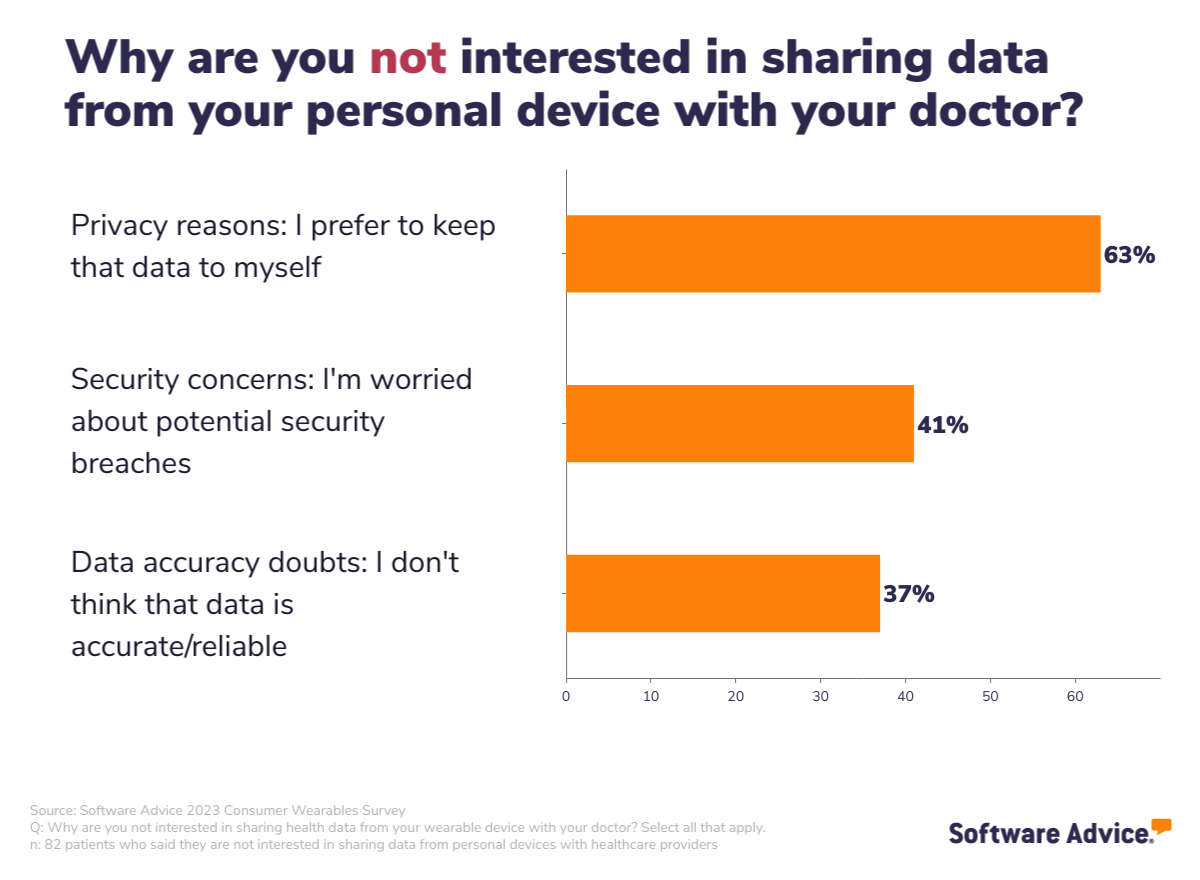
Privacy concerns are not unfounded [6], so we strongly encourage you to take this seriously if you want to begin incorporating consumer wearable data into your treatment plans. Treat this data the same way you would treat any patient information—with extreme caution. Make sure it is stored in the same place as the rest of your patients’ history, medication, treatment, and payment information in order to better protect patient data.
The future of consumer health wearables
It’s also worth mentioning that this type of technology is only going to grow in use and popularity. Practices that embrace technology early will find themselves on the leading edge of tomorrow, and they’ll also find that their patients enjoy the benefits as well.
Apple Watch and Fitbit are currently the most popular consumer wearable devices, with 45% and 30% of users in our survey owning these two devices respectively. But advances are being made in this field for both medically prescribed devices like biosensors that will be tattooed into patients’ skin and consumer devices like contact lenses with data visualization.
For what it’s worth, patients are interested in the future of these devices as well, with 20% being extremely interested.
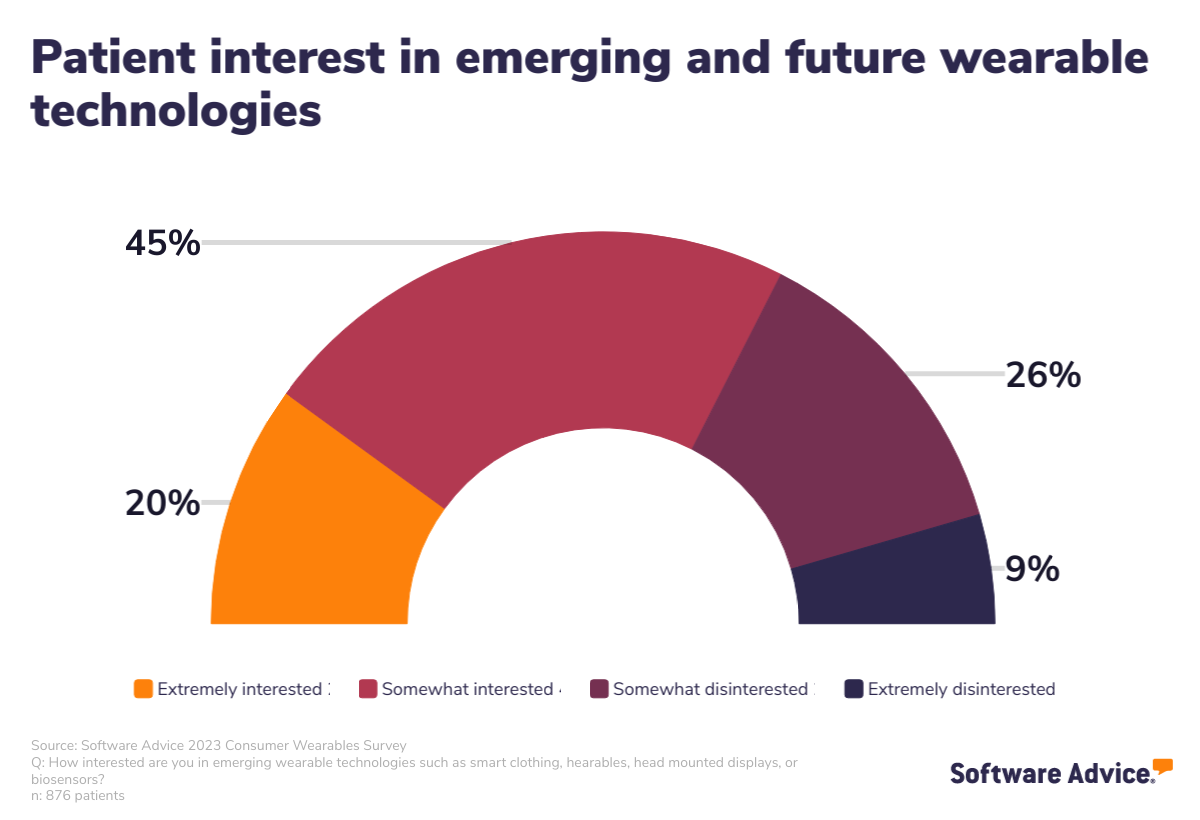
While 92% of patients are still most comfortable wearing devices on their wrist, it’s not all that far-fetched for future iterations of this technology to become more and more invasive—and, more importantly, much better at helping users manage their own health.
Read more on medical technology and improving patient experiences:
Survey methodology
*The Software Advice 2023 Consumer Wearables Survey was conducted in September 2023. It used screeners to narrow the survey audience down to 876 patients in the U.S. who had seen a healthcare provider within the past two years and who own and use personal wearable health trackers like Apple Watch or Fitbit.
Sources
Apple Watch sets new US record, now owned by 30% of iPhone users, Apple Insider
Fitbit Revenue and Usage Statistics (2023), Business of Apps
Report: Oura's Business Breakdown & Founding Story, Contrary Research
Impact of Patient Engagement on Healthcare Quality: A Scoping Review, Journal of Patient Experience
Get Active!, Centers for Disease Control and Prevention
AI wearables are gaining popularity, but are they a violation of privacy?, Daily Hive